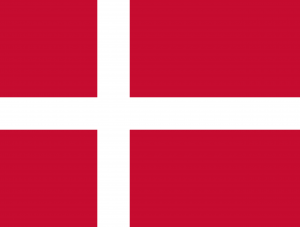Difference between revisions of "Language/Danish/Culture/Danish-Customs-and-Etiquette"
m (Quick edit) |
m (Quick edit) |
||
| Line 1: | Line 1: | ||
<span pgnav> | |||
{| class="wikitable pg_template_nav" | |||
|[[Language/Danish/Culture/Holidays-and-Celebrations|◀️ Holidays and Celebrations — Previous Lesson]] | |||
|} | |||
</span> | |||
{{Danish-Page-Top}} | {{Danish-Page-Top}} | ||
| Line 89: | Line 95: | ||
{{Danish-Page-Bottom}} | {{Danish-Page-Bottom}} | ||
<span links></span> | <span links></span> | ||
<span pgnav> | |||
{| class="wikitable pg_template_nav" | |||
|[[Language/Danish/Culture/Holidays-and-Celebrations|◀️ Holidays and Celebrations — Previous Lesson]] | |||
|} | |||
</span> | |||
Revision as of 20:30, 29 March 2023
| ◀️ Holidays and Celebrations — Previous Lesson |
Introduction
As a beginner learning Danish, it is important to not only focus on grammar and vocabulary, but also on the customs and etiquette of Danish society. Understanding the cultural nuances will allow you to better communicate with Danes and avoid any embarrassing misunderstandings.
In this lesson, we will explore some of the important customs and etiquette of Denmark, including greetings, table manners, and gift-giving traditions.
Finish this lesson and explore these related pages: Danish Design & Religion.
Greetings
Danes are generally very friendly people, and greetings play an important role in Danish culture. Here are a few things to keep in mind:
- When meeting someone for the first time, it is customary to shake hands and introduce yourself.
- When greeting friends or acquaintances, Danes will often use the informal greeting "hej" (pronounced like "hi" in English).
- It is common for Danes to use first names in most situations, even with people they have just met.
- Danes are not known for their displays of affection and hugging or kissing on the cheek is reserved for close family and friends.
Table Manners
Danes take their meals seriously and mealtime is seen as a time to connect with family and friends. Here are some table manners to keep in mind:
- It is customary to wait until everyone is seated and has their food before beginning to eat.
- Keep your hands on the table at all times, not in your lap.
- Danes tend to eat slowly and conversation is an important part of the meal.
- It is polite to finish everything on your plate to show appreciation to the host.
- When finished, place your silverware side by side on the plate.
- If you are a guest, it is common courtesy to offer to help with dishes or cleanup.
Gift-Giving Traditions
In Denmark, gift-giving is a popular way to show appreciation to friends and family. Here are a few customs to keep in mind:
- It is customary to bring a small gift when visiting someone's home, such as flowers or chocolate.
- During the Christmas season, Danes celebrate with a custom known as "julefrokost," which involves gathering with friends or colleagues to enjoy a feast and exchange gifts.
- When giving a gift, it is important to wrap it neatly and include a card or note.
- It is not considered rude to ask someone what they would like as a gift.
- Gifts are opened in private and a handwritten thank-you note is always appreciated.
Conclusion
Learning Danish customs and etiquette is an important part of becoming fluent in the language. By understanding the cultural nuances of Danish society, you will be better equipped to communicate with Danes and show respect for their way of life.
With this lesson finished, you may want to explore these additional pages: Architecture & Literature.
Other Lessons
- Music
- Architecture
- Danish Design
- Religion
- Film
- Holidays and Celebrations
- Media
- Holidays
- Literature
- Sports
Sources
- Danish manners: Why everyone is laughing at you ...
- 11 Danish cultural traditions that only make sense to Danes
| ◀️ Holidays and Celebrations — Previous Lesson |
